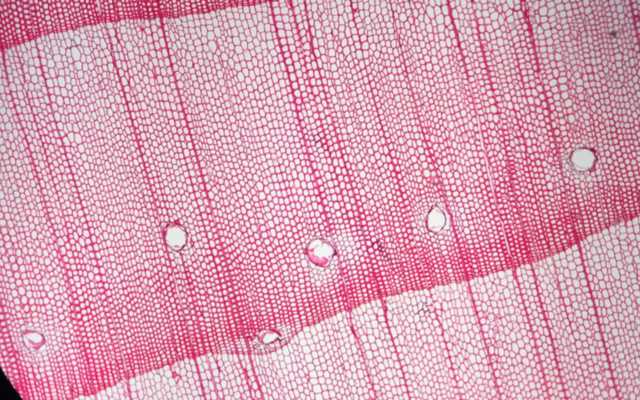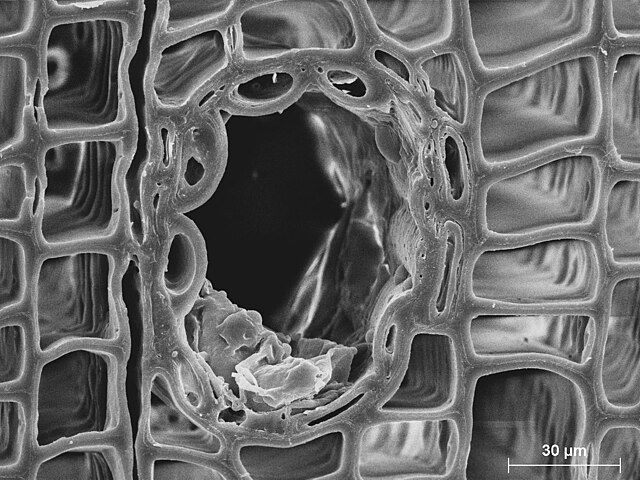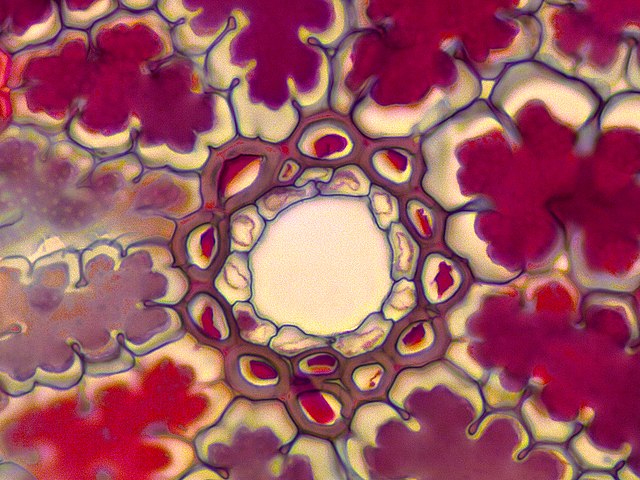Top Qs
Timeline
Chat
Perspective
Resin canal
Elongated, tube-shaped intercellular spaces surrounded From Wikipedia, the free encyclopedia
Remove ads
Resin canals or resin ducts are elongated, tube-shaped intercellular spaces surrounded by epithelial cells which secrete resin into the canal. These canals are orientated longitudinally and radially in between fusiform rays.[1] They are usually found in late wood, or denser wood grown later in the season.[2] Resin is antiseptic and aromatic and prevents the development of fungi and deters insects.



Remove ads
Types
Characteristics
Resin canal characteristics (such as number, size and density) in pine species can determine its resistance to pests. In one study, biologists were able to categorize 84% of lodgepole pine, and 92% of limber pines, as being either susceptible or resistant to bark beetles based only on their resin canals and growth rate over 20 years.[3] In another study, scientists found ponderosa pine trees that survived drought and bark beetle attacks had resin ducts that were >10% larger in diameter, >25% denser (resin canals per mm2), and composed >50% more area of per ring.[4]
Remove ads
References
Further reading
Wikiwand - on
Seamless Wikipedia browsing. On steroids.
Remove ads
